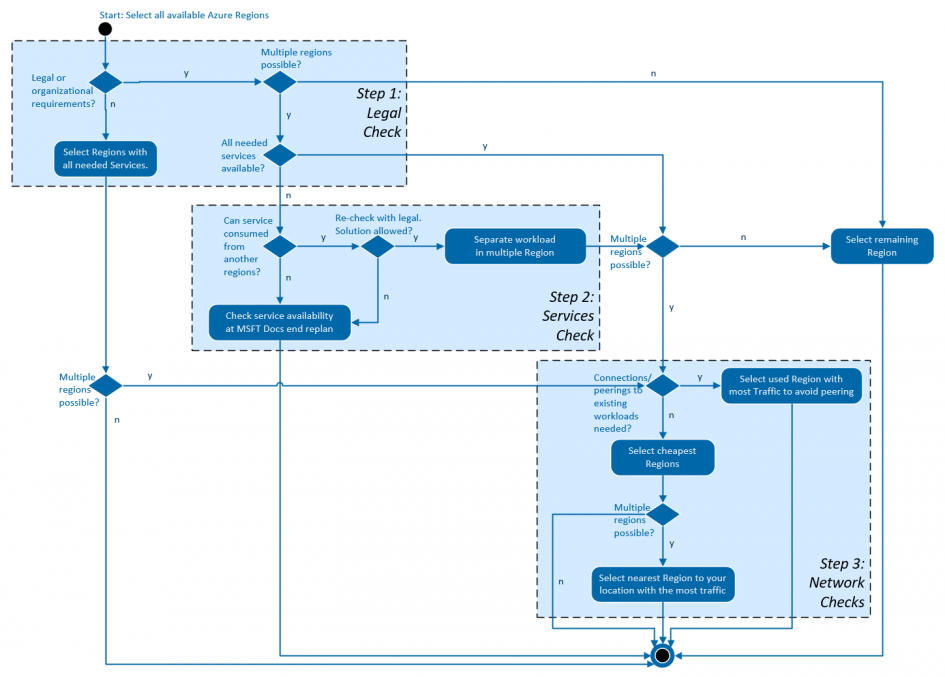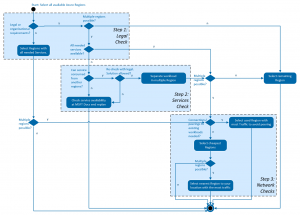Many customers have problems choosing the right Azure Region for their workload. Especially since the German Region is available, but not all Azure services are available yet, the selection has become even more difficult.
To simplify the selection, the workflow shown was created:
The workflow essentially shows the 3 most important selection criteria/steps (in the blue areas).
Step 1 – Legal Check
The highest priority when selecting the regions should have legal or data protection requirements. Specifically legal requirements for the storage of data (e.g. tax data only in Germany) or requests from data protection officers. These types of requirements are usually indisputable. If only one Azure region fulfills this requirement, then all other requirements must be subordinate to it. In the worst case, the use of cloud may not even be possible if the required services are not available in that region.
Step 2 – Services Check
This primarily concerns the availability of the required services. Many services are already available, especially in the new Germany region, but the Availability Zones have been a few month in coming or many SKUs were still missing for many services.
If there are no corresponding services in the region, cloud usage can still be waited until the corresponding rollouts have been carried out by Microsoft.
Alternatively, services can also be obtained from another region. Here, however, a legal check again makes sense or the solution must be built in that way, that the critical data does not reach the additional region. In addition, peerings incur higher costs.
Step 3 – Network Check
If existing workloads should be connected, care should be taken to ensure that the workloads, which exchange a lot of data, are close together. On the one hand, this applies to existing Azure workloads, i.e. if there is a workload in the West Europe region and a new workload could be provided in West Europe or in Germany West Central, West Europe should be chosen if the workloads communicate a lot. On the other hand, this applies to on-premises workloads, i.e. if the systems used are in Germany and there is, for example, an MPLS connection to Frankfurt, the Azure region (Germany West Central) should be preferred. This can keep peering costs and latencies low.
If there are no special requirements from a network perspective, the cheapest region can be selected. However, many customers prefer to choose the closer region here, but it depends on the concrete requirements and the vision behind the cloud move.


Schreibe einen Kommentar